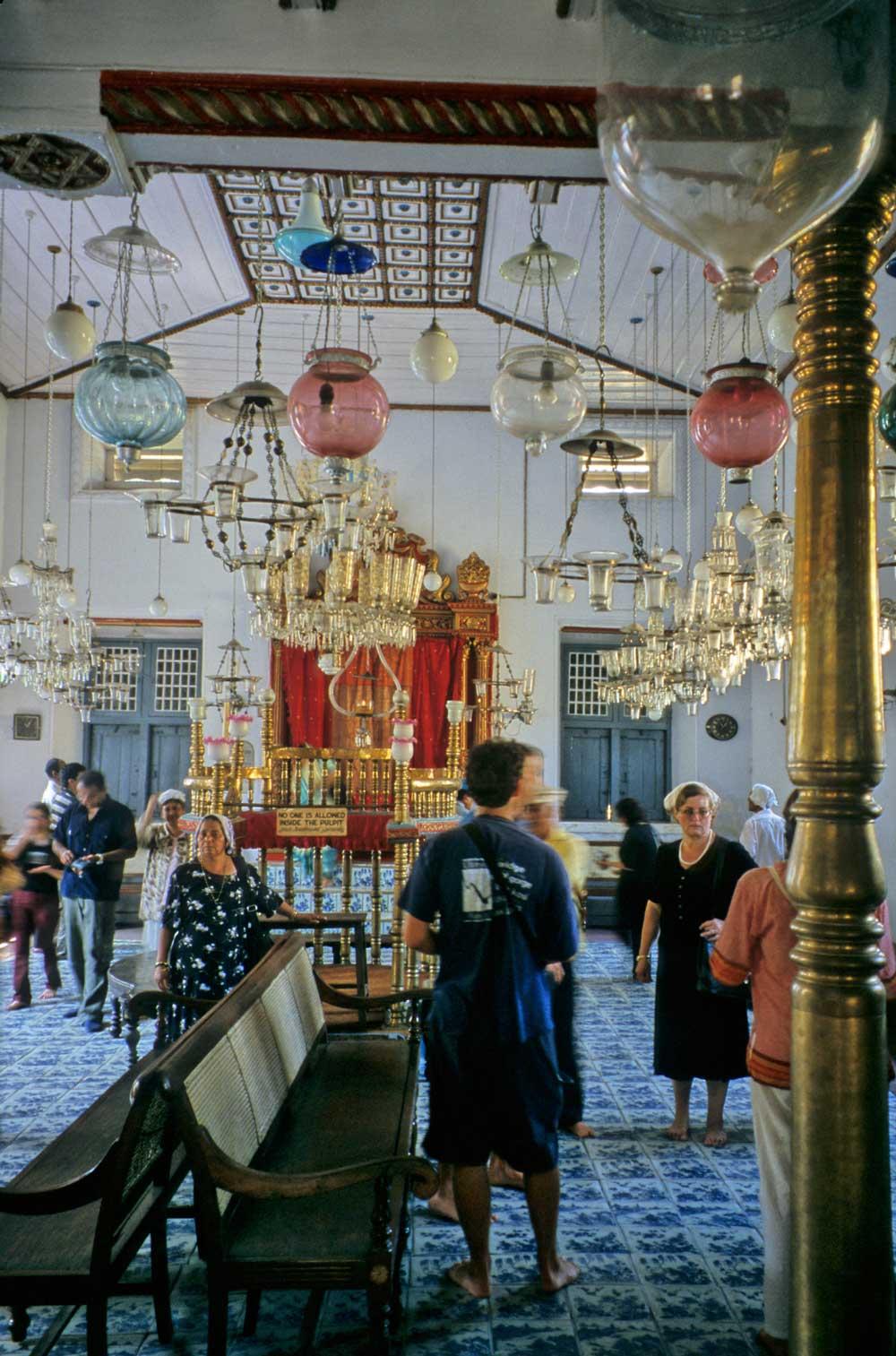
Pardesi Synagogue
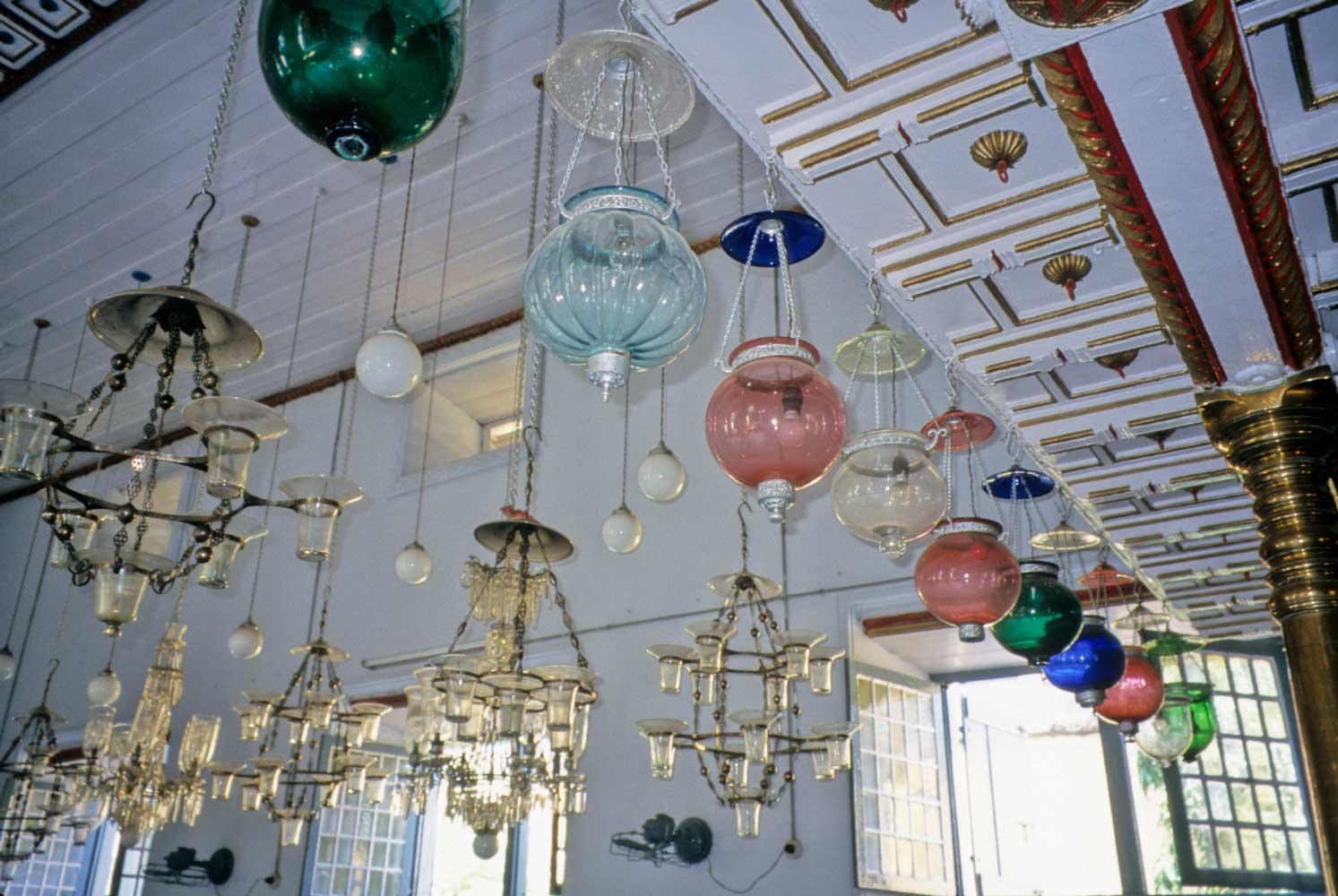
The colored glass oil lamps come from Belgium.
When in use, a wick floats on oil over a layer of water.
13 January Kochi
We started a day of sightseeing at Pardesi Synagogue in
Mattancherry on the east side of the peninsula. The Jewish community built it in
1568, but the Portuguese partially destroyed the building in 1662, then the
community was able to repair it two years later after the Dutch took over. The
venerable building is famed for its gold pulpit in the center, willow pattern
floor tiles from China, colored-glass lamps, and Belgian chandeliers.
Photography is strictly prohibited now, but I took these snaps in 2002 on a ride
from Lahore to Kanyakumari; see Southern India for
that story.

Pardesi Synagogue

The colored
glass oil lamps come from Belgium.
When in use, a wick floats on oil over a
layer of water.
A short walk to the north led to Mattancherry Palace, originally gifted by the Portuguese to the Raja of Kochi in 1555, then renovated courtesy of the Dutch in 1663. Now a museum, the palace has detailed murals of Hindu epics and royal clothing and regalia. Countless shops near the synagogue and palace offer not just souvenirs, but also huge artworks and architectural fragments from old temples and houses. I enjoyed a wander through some of the galleries, but managed not to purchase anything. Glenda and Julie also found the items amazing for their size and detail.
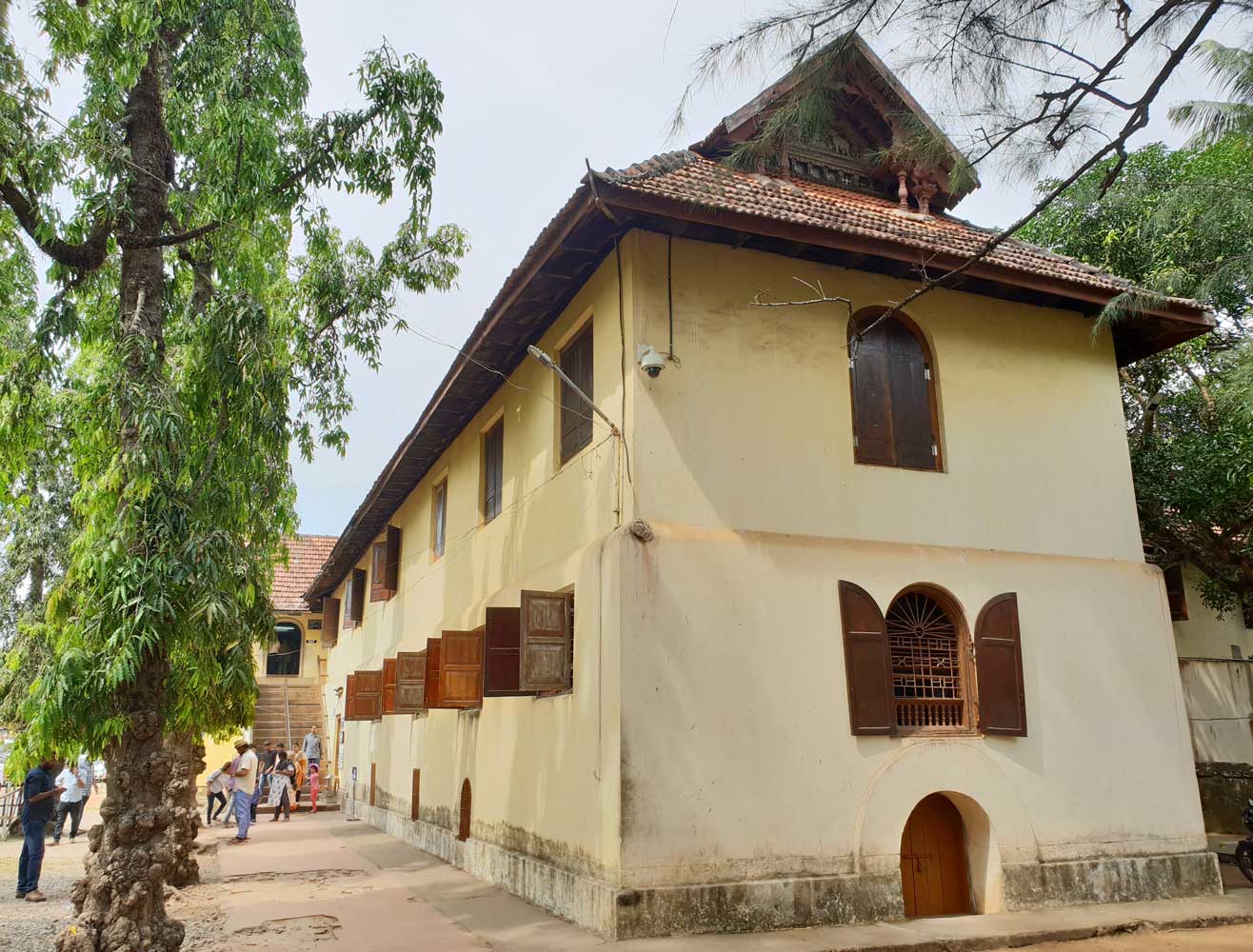
Mattancherry Palace has a plain Dutch-style exterior and an elaborately
decorated Kerala interior.
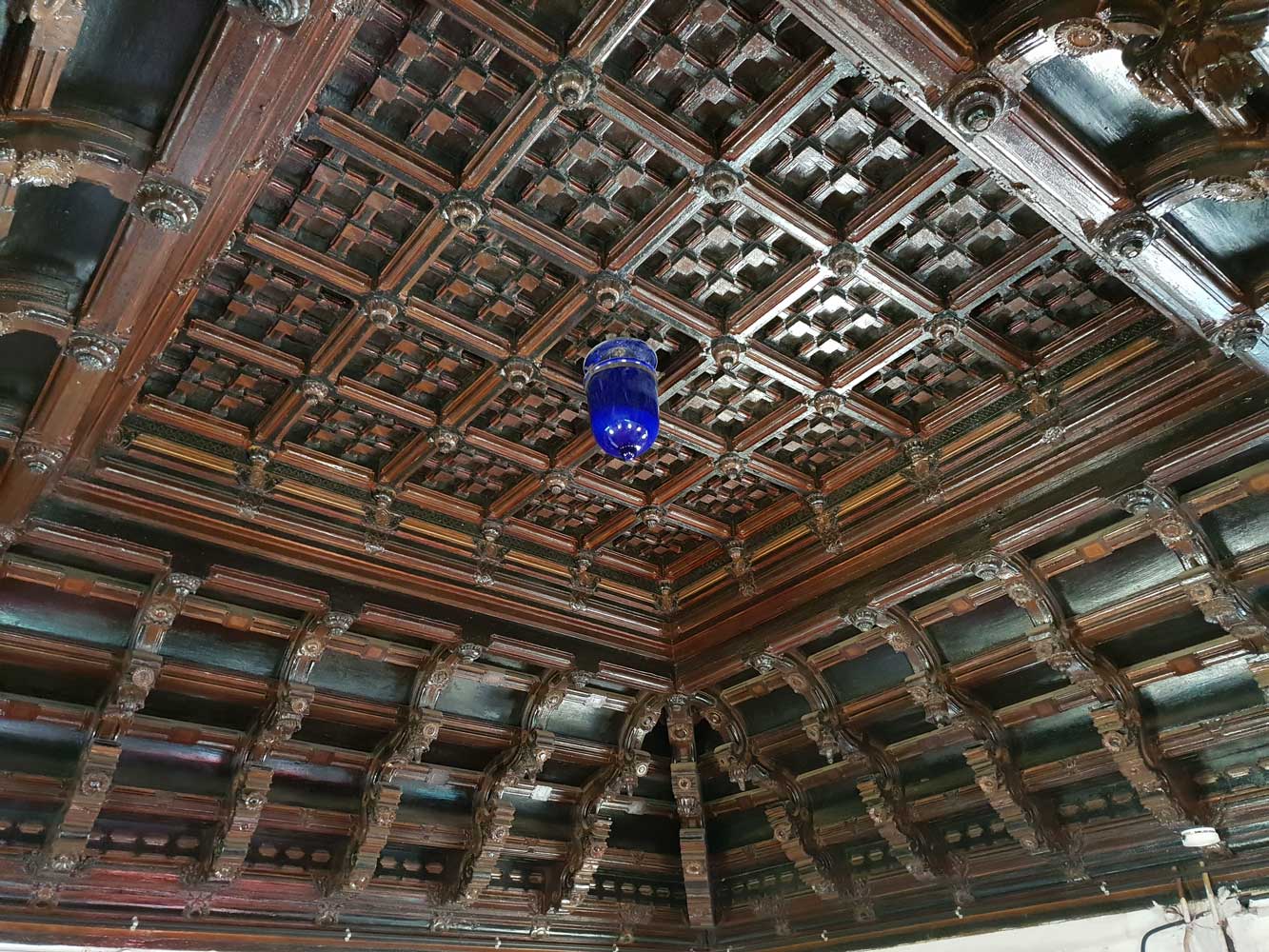
Palace ceiling
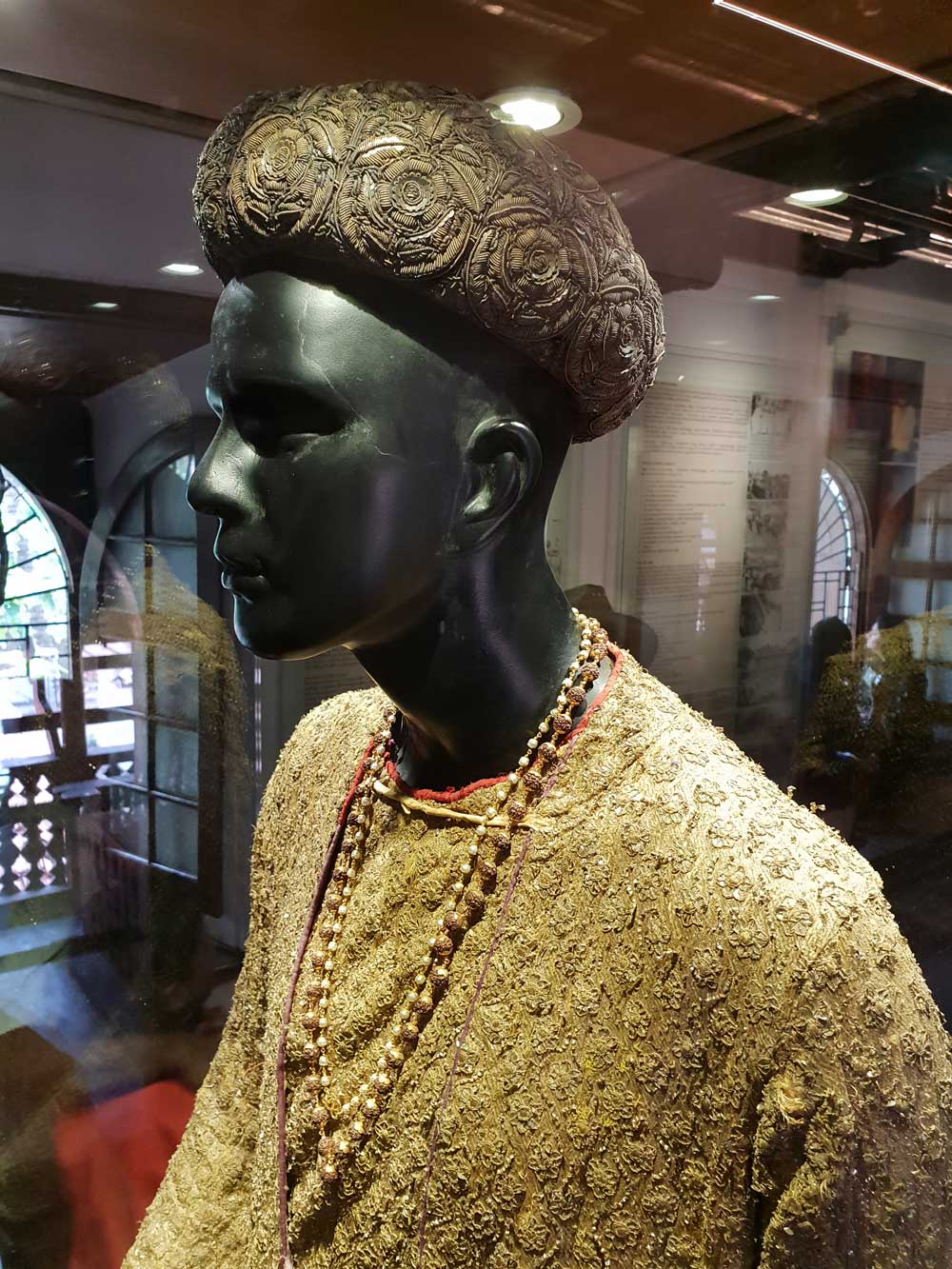
Ceremonial costume worn by Cochin maharajas
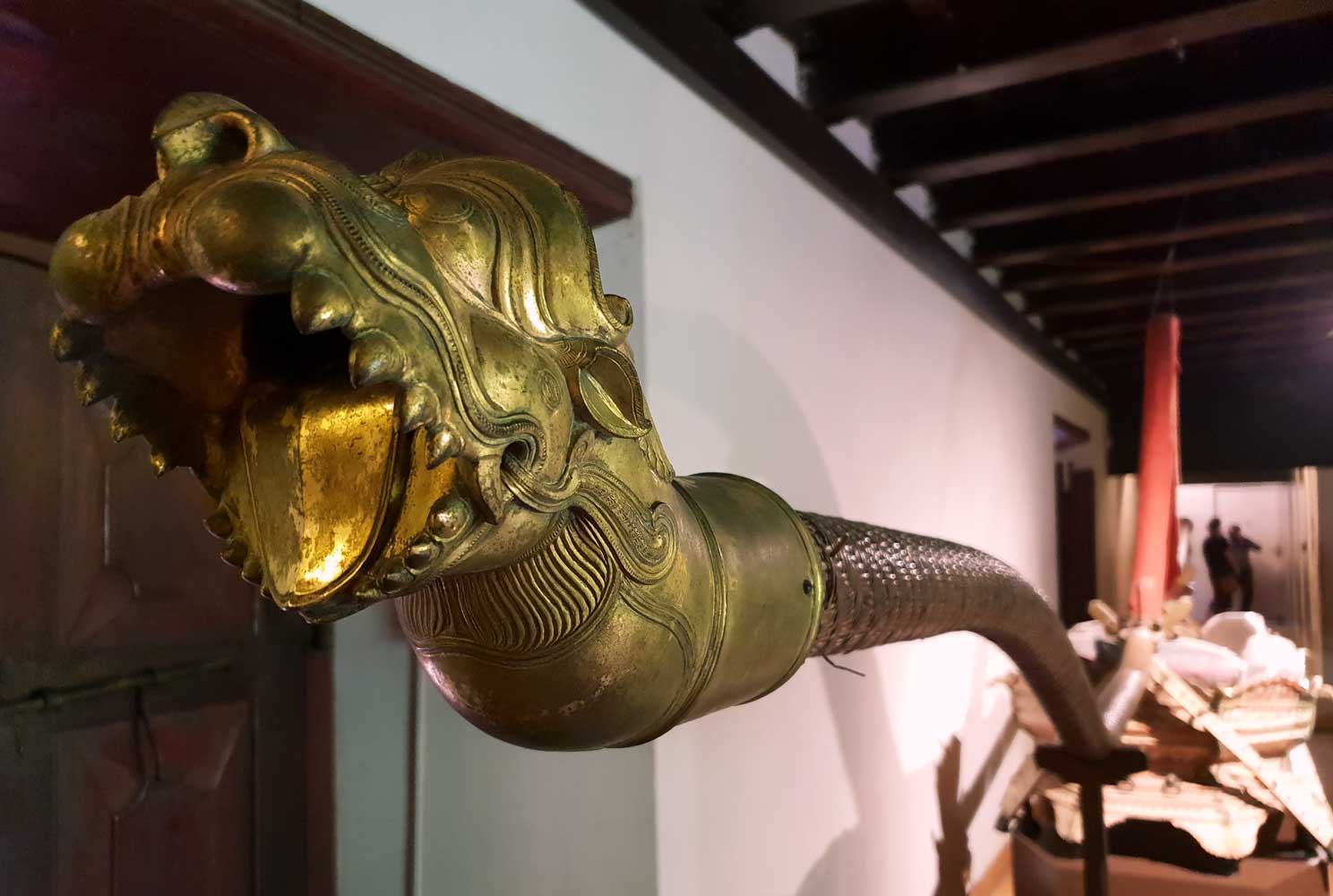
Palanquin detail
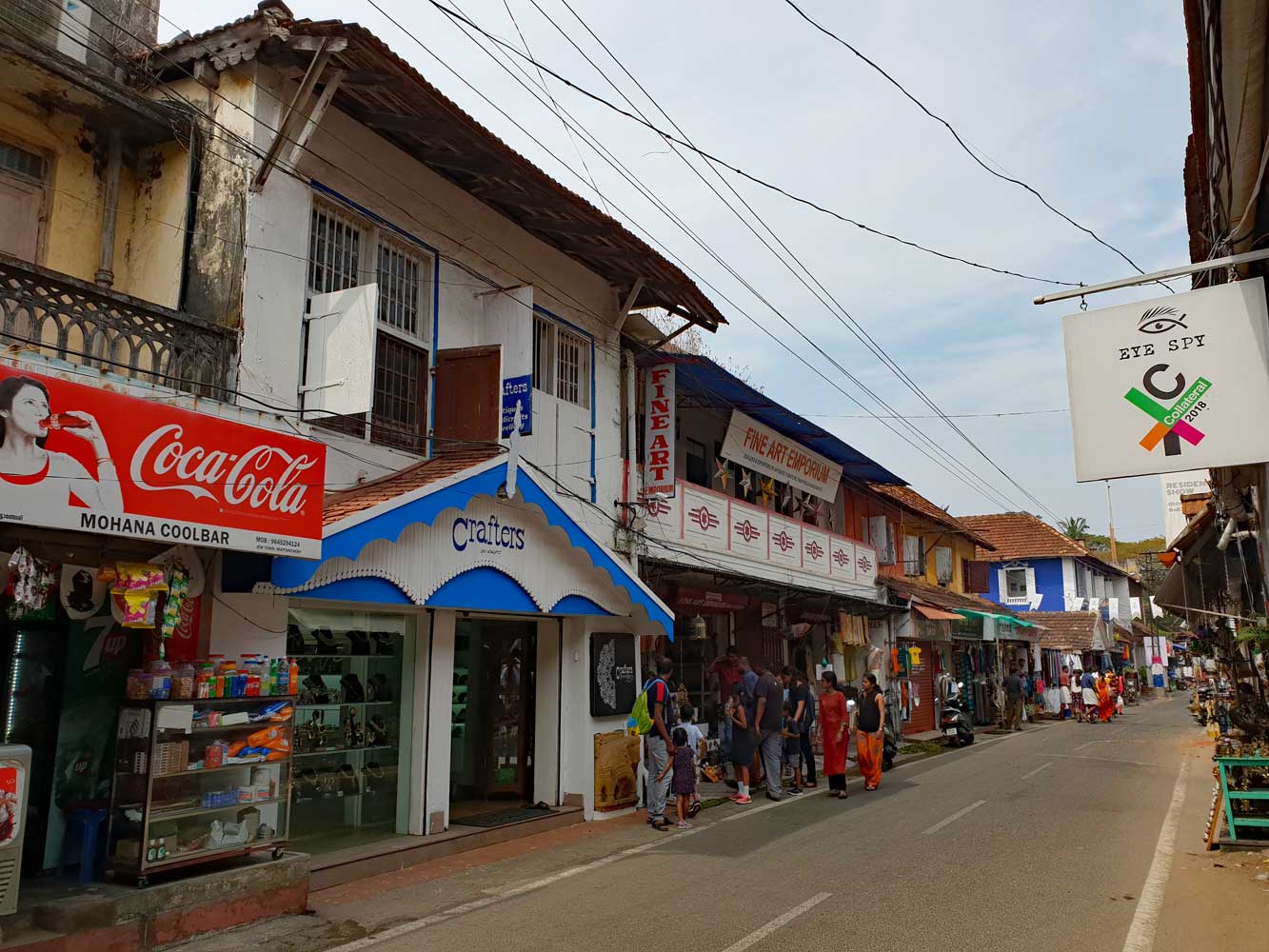
Jew Town, Mattancherry
In the evening we took in another of the famous sights of Kochi—a performance of Kathakali dance that features fantastically ornate makeup and costumes. These dances traditionally take place at temples and can run all night, but shorter performances for tourists take place every evening. We walked the short distance to Kerala Kathakali Centre, getting tickets beforehand from our Airbnb host. Makeup for the performances can take an hour to apply, and the actors came on stage at 5 p.m. so we could watch the process. Two of the actors also had white ‘beards’ that an assistant carefully made and attached. The performance Killing of Baka told of a demon who terrorized villagers and the Mahabarata hero Bhima who came to their rescue. Each day a Brahmin had to prepare a delicious meal demanded by the demon, but this time Bhima would deliver it. On arrival at the demon’s abode, Bhima began eating the food, which greatly enraged the demon. A fight ensued, and the demon met his death after being repeatedly struck by Bhima’s club. It didn’t seem a fair fight because the demon lacked a weapon! Our seats originally had been downstairs in the far back row, but it turned out the balcony had open seating, so we moved there. I found this ideal for photography, which is permitted but without flash.
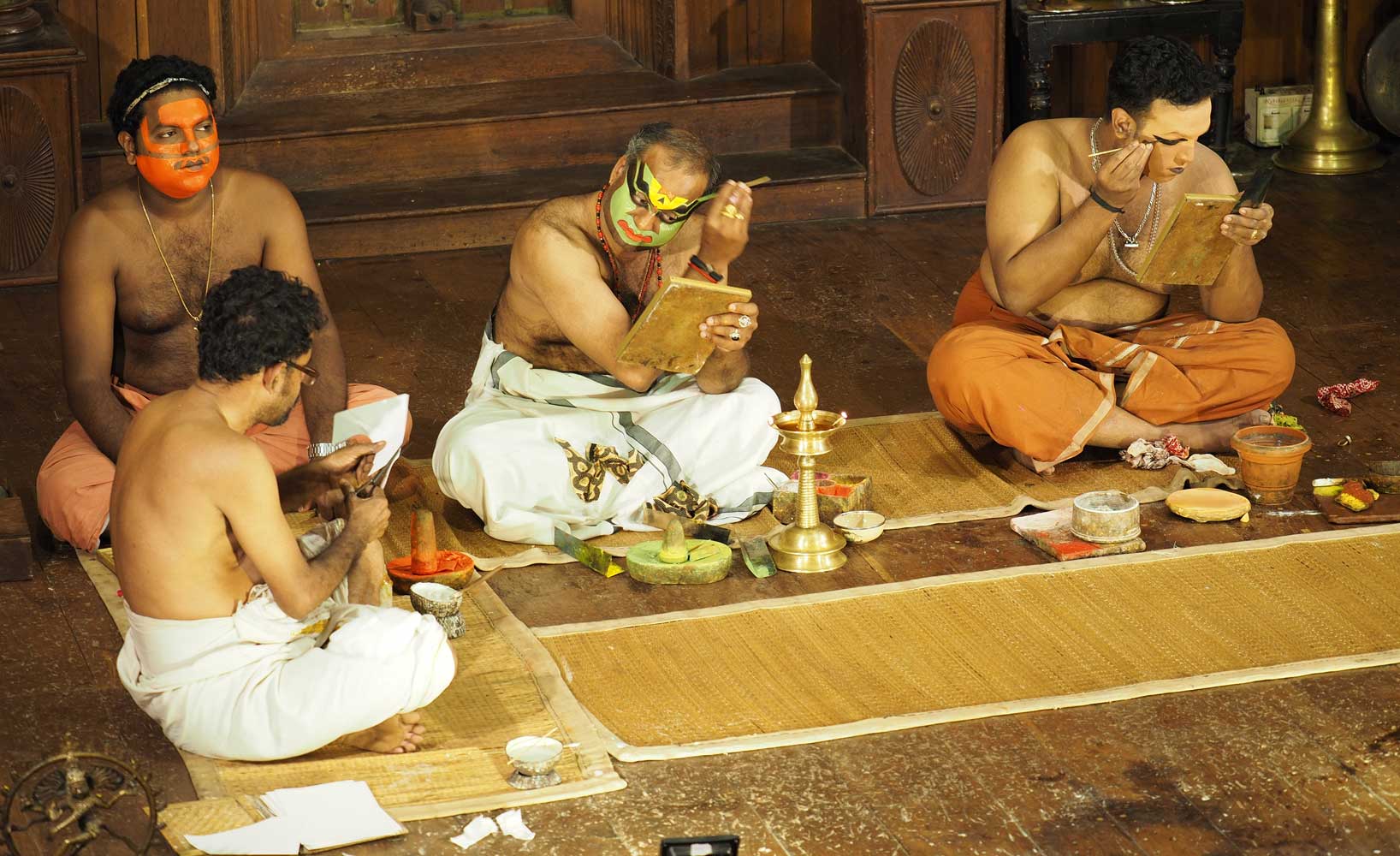
The demon, Bhima, and Brahmin begin putting on makeup while an assistant cuts
material for the beard.
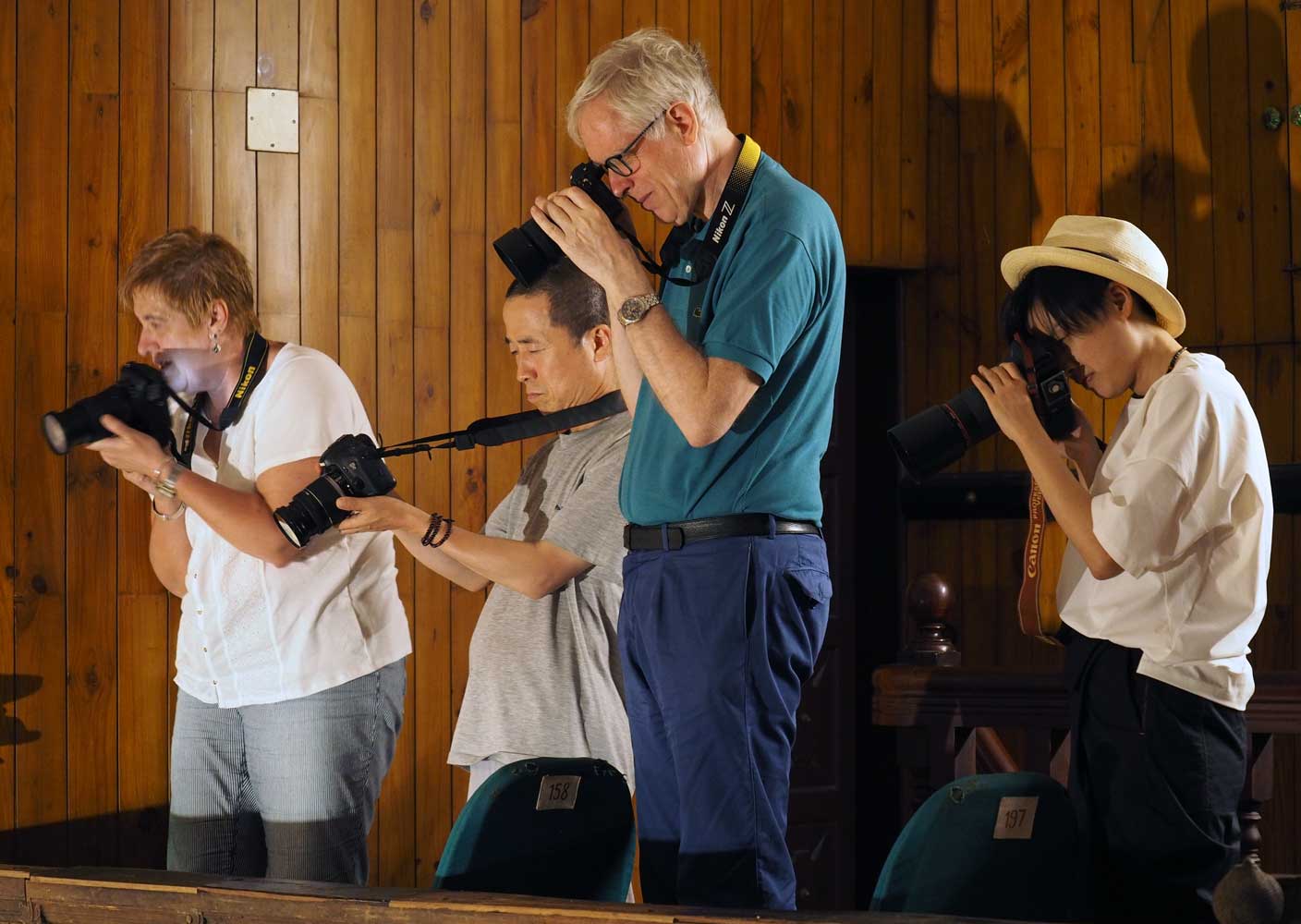
Photographers catch the action from the balcony.
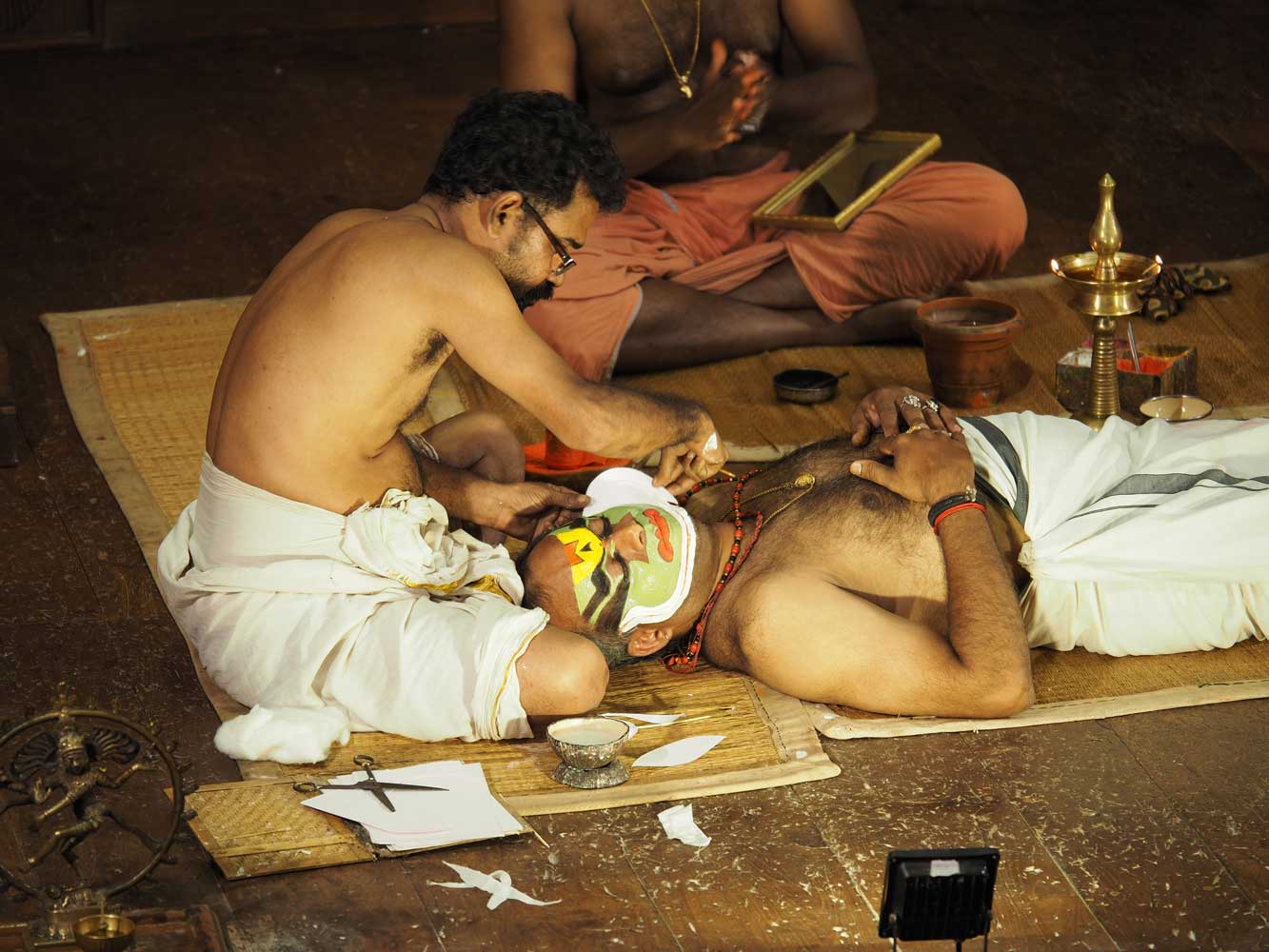
Bhima gets his beard.
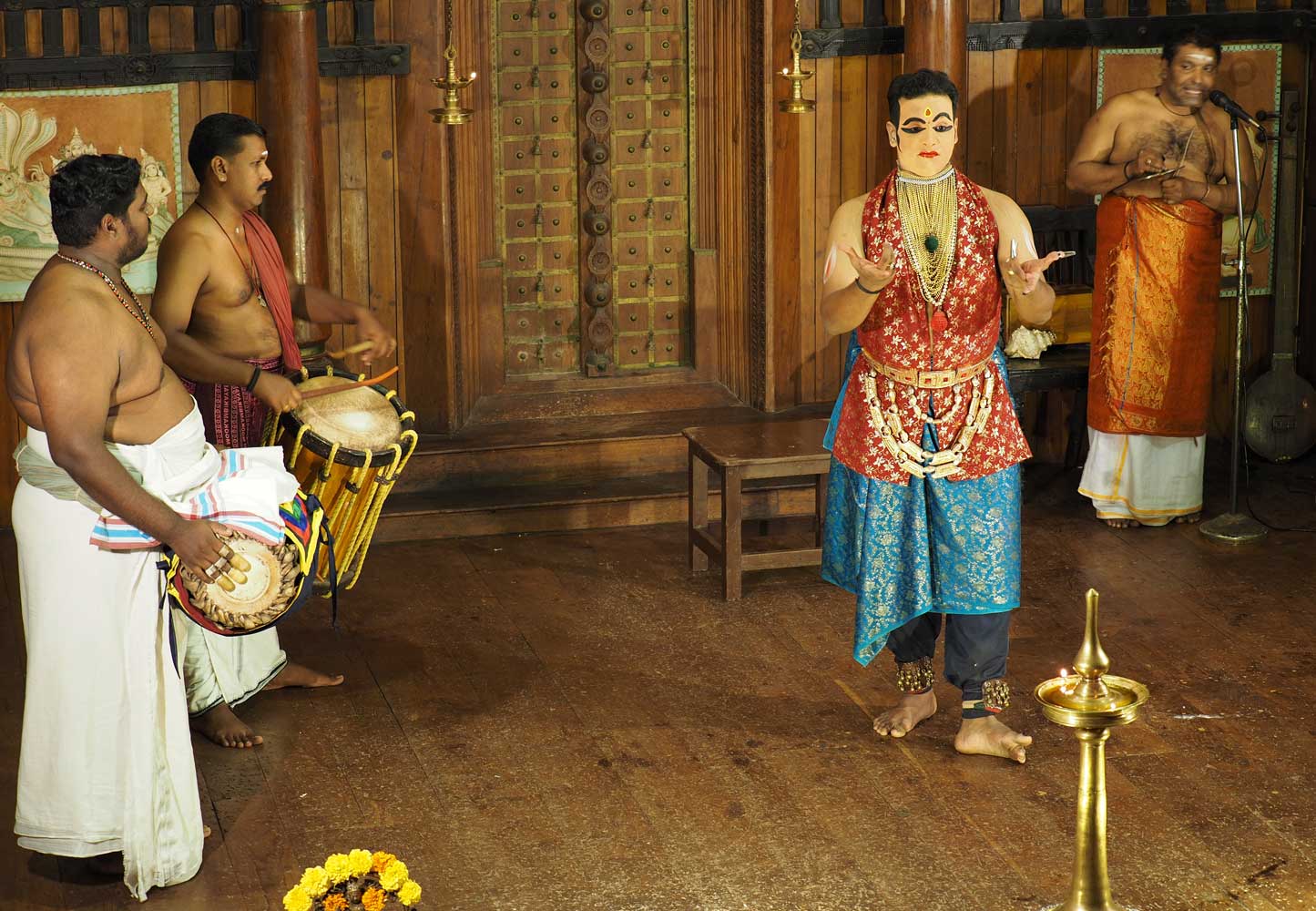
In this demonstration a narrator (far right) explains gestures of the dancer.
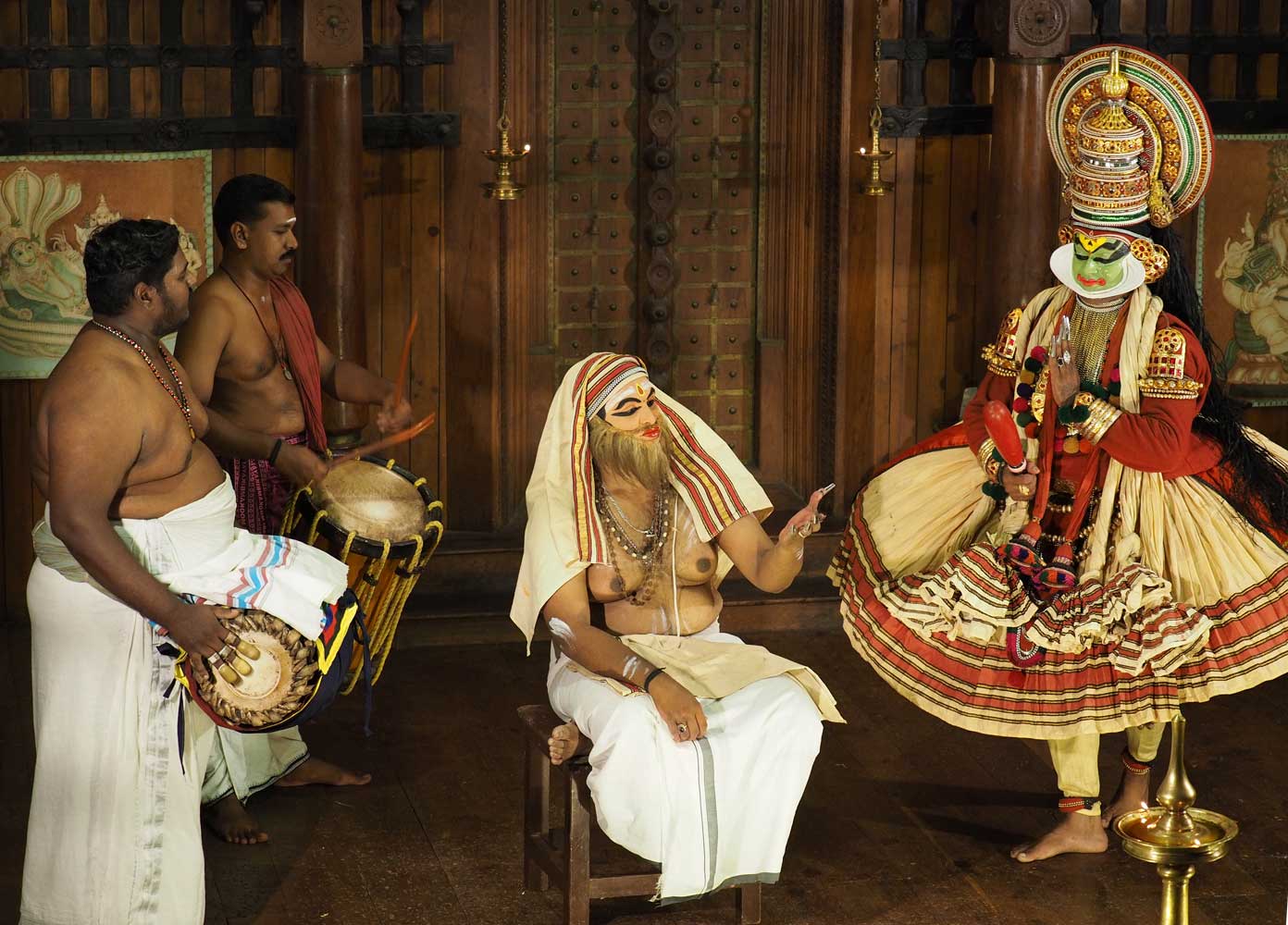
The Brahmin (seated) relates the situation to Bhima.
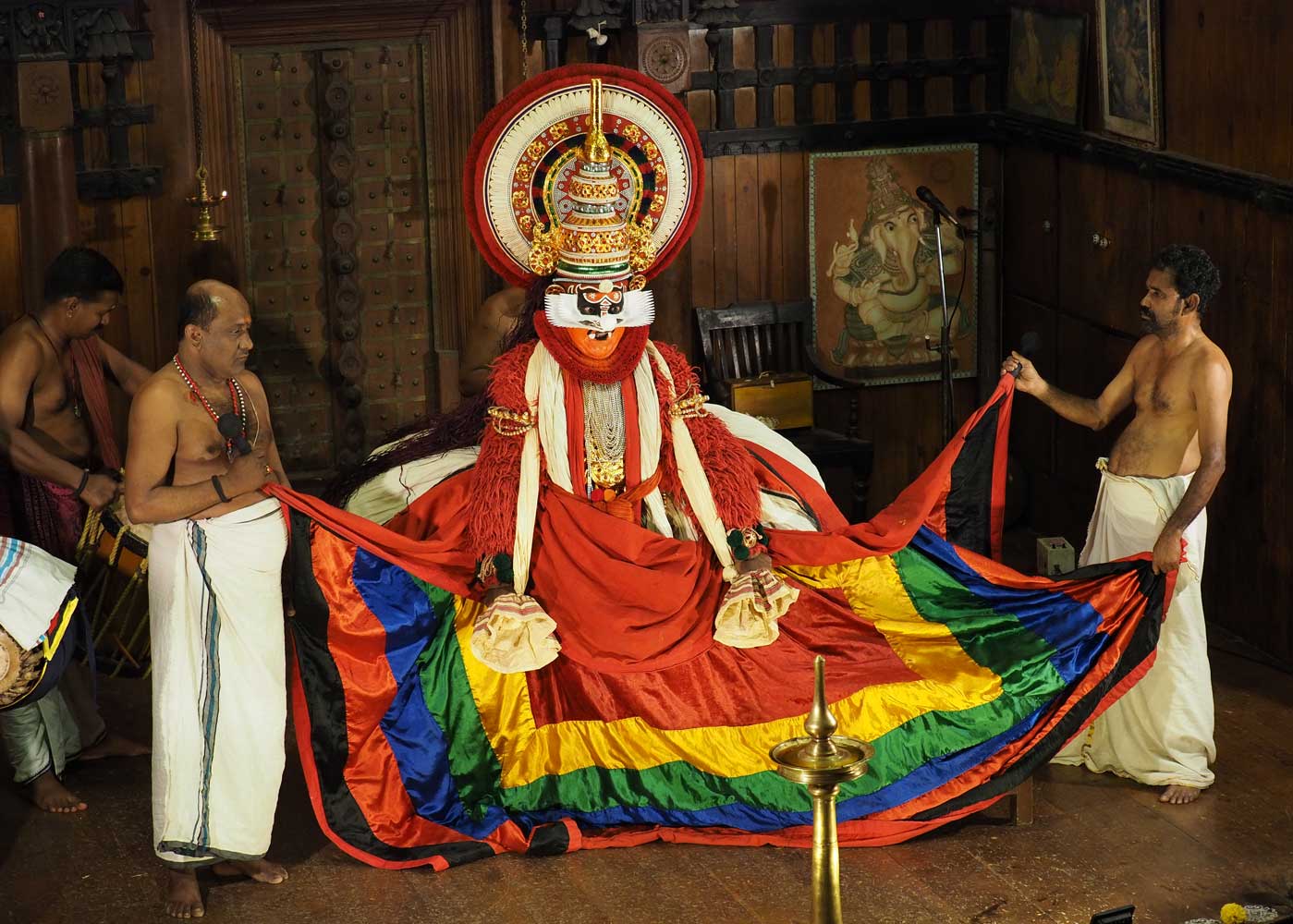
The curtain comes down to reveal the powerful demon!
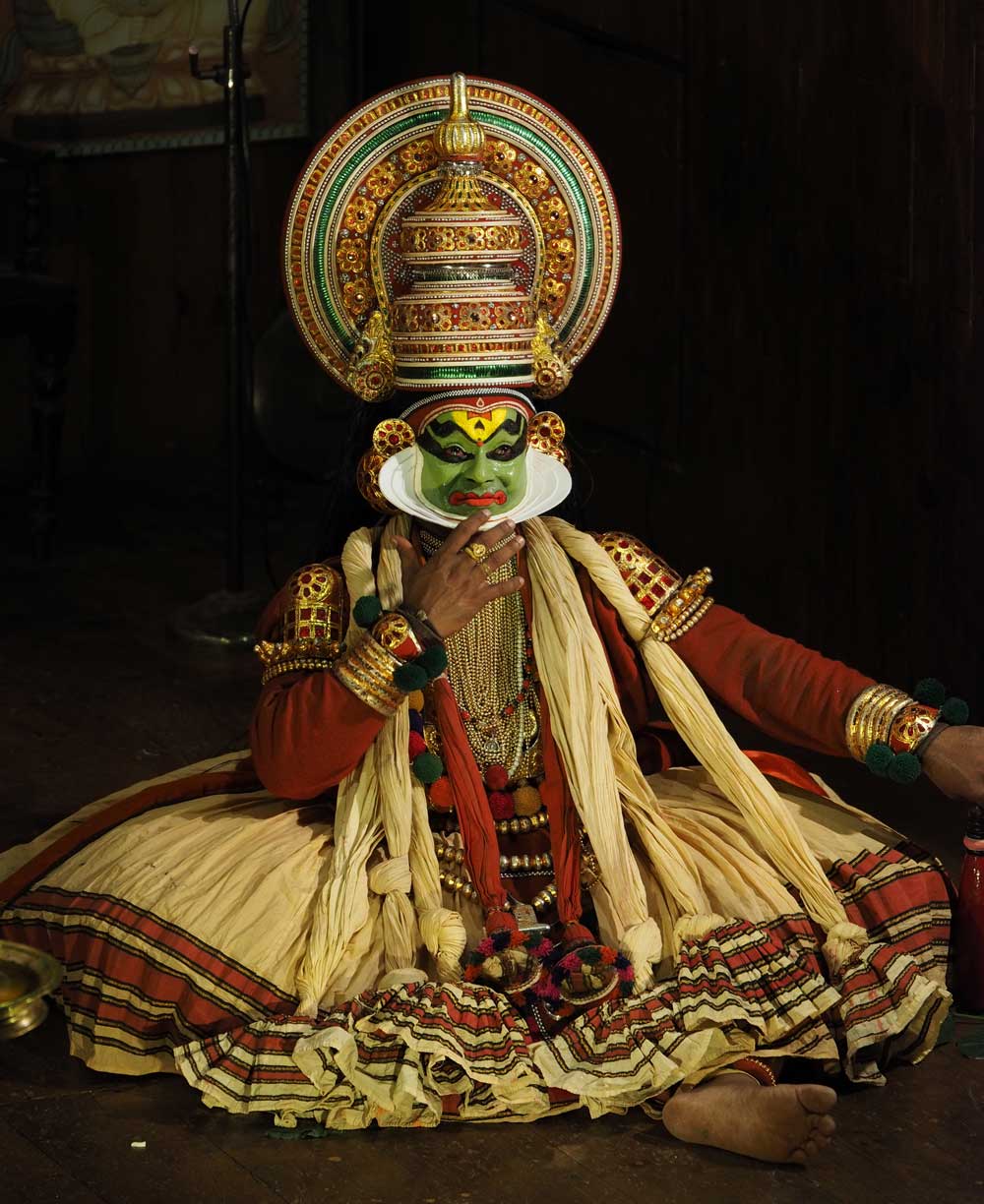
Bhima enjoys eating the demon’s
food.
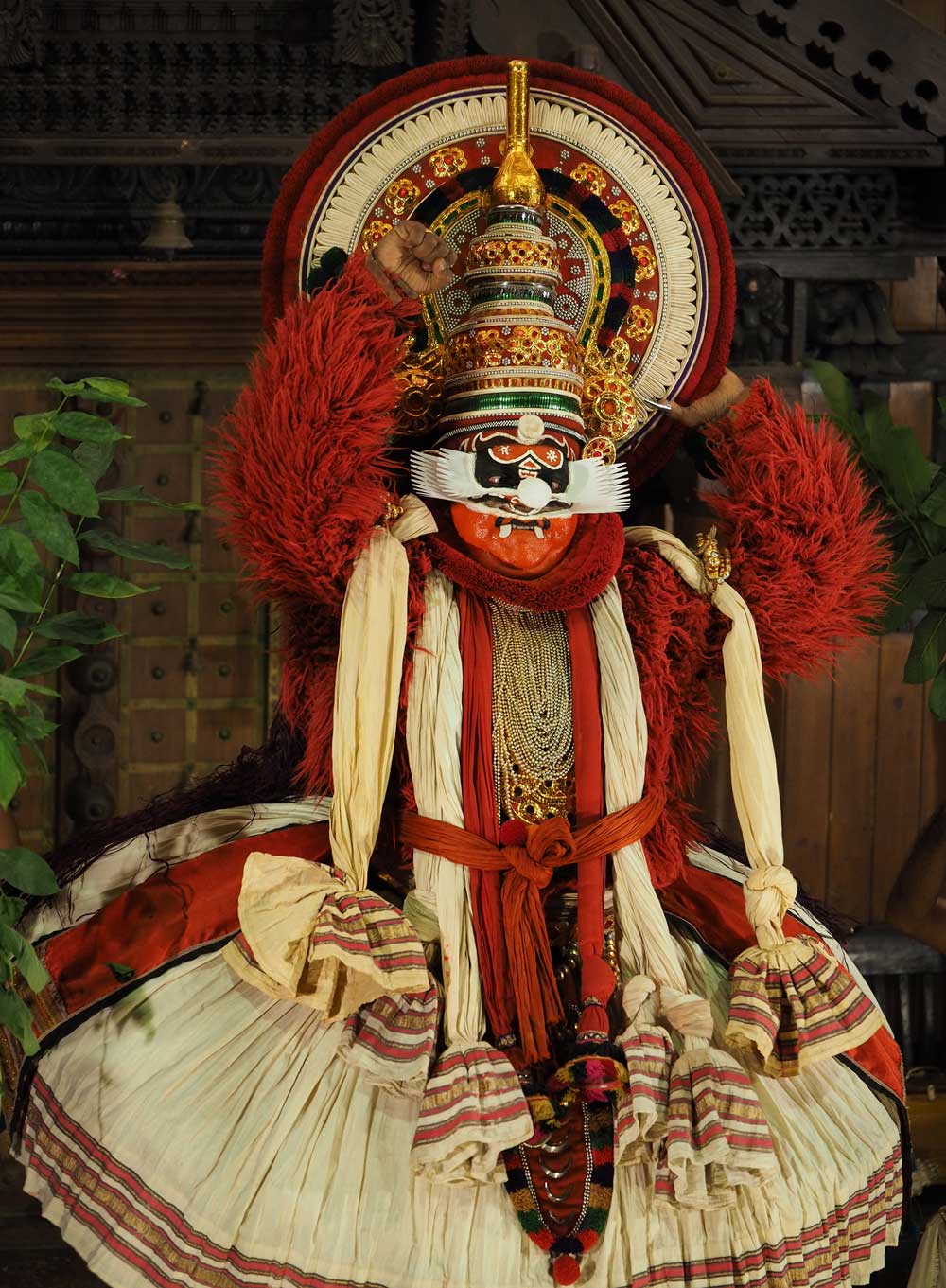
Meanwhile the demon gets very worked up!
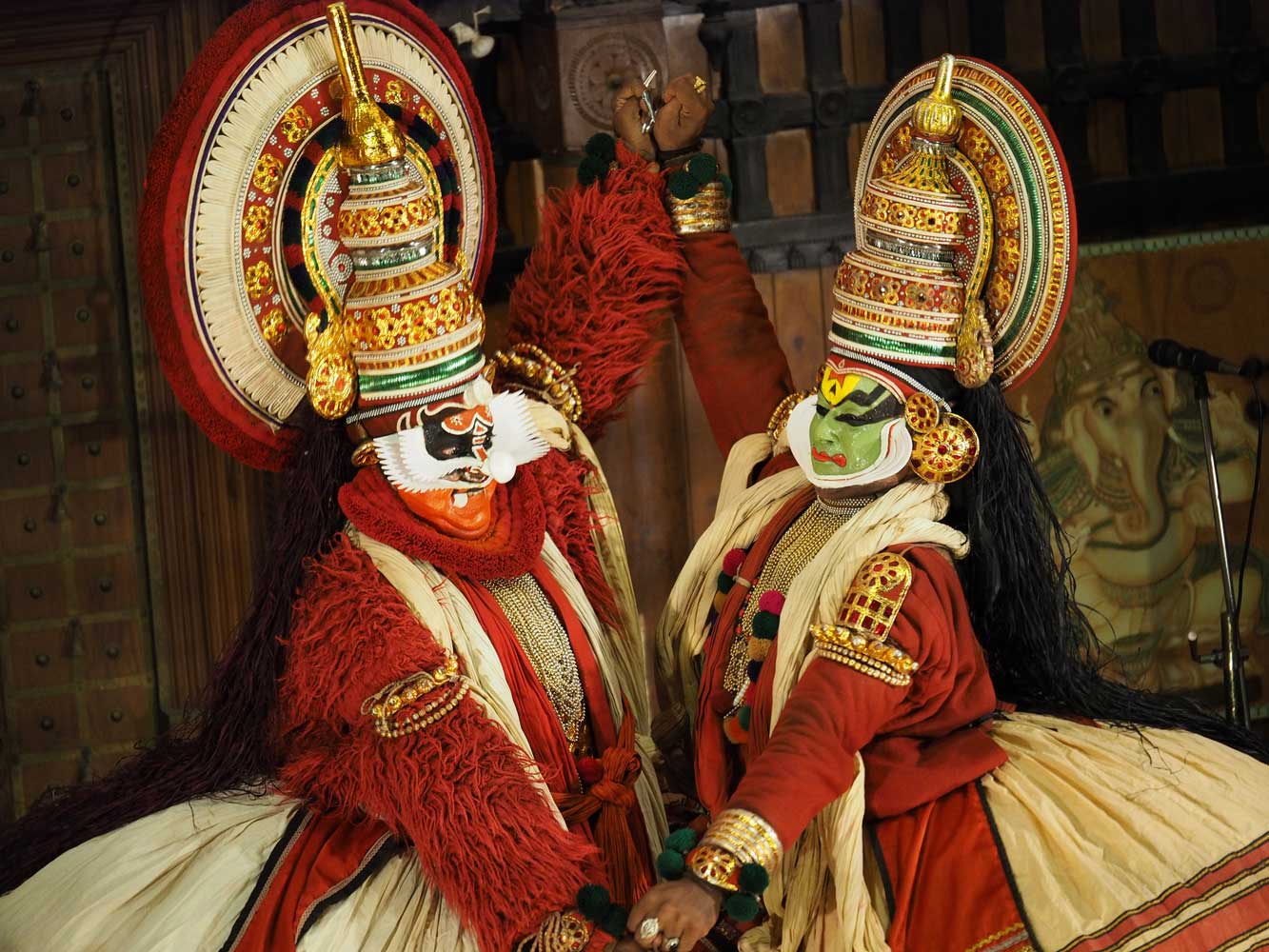
They fight to the finish!
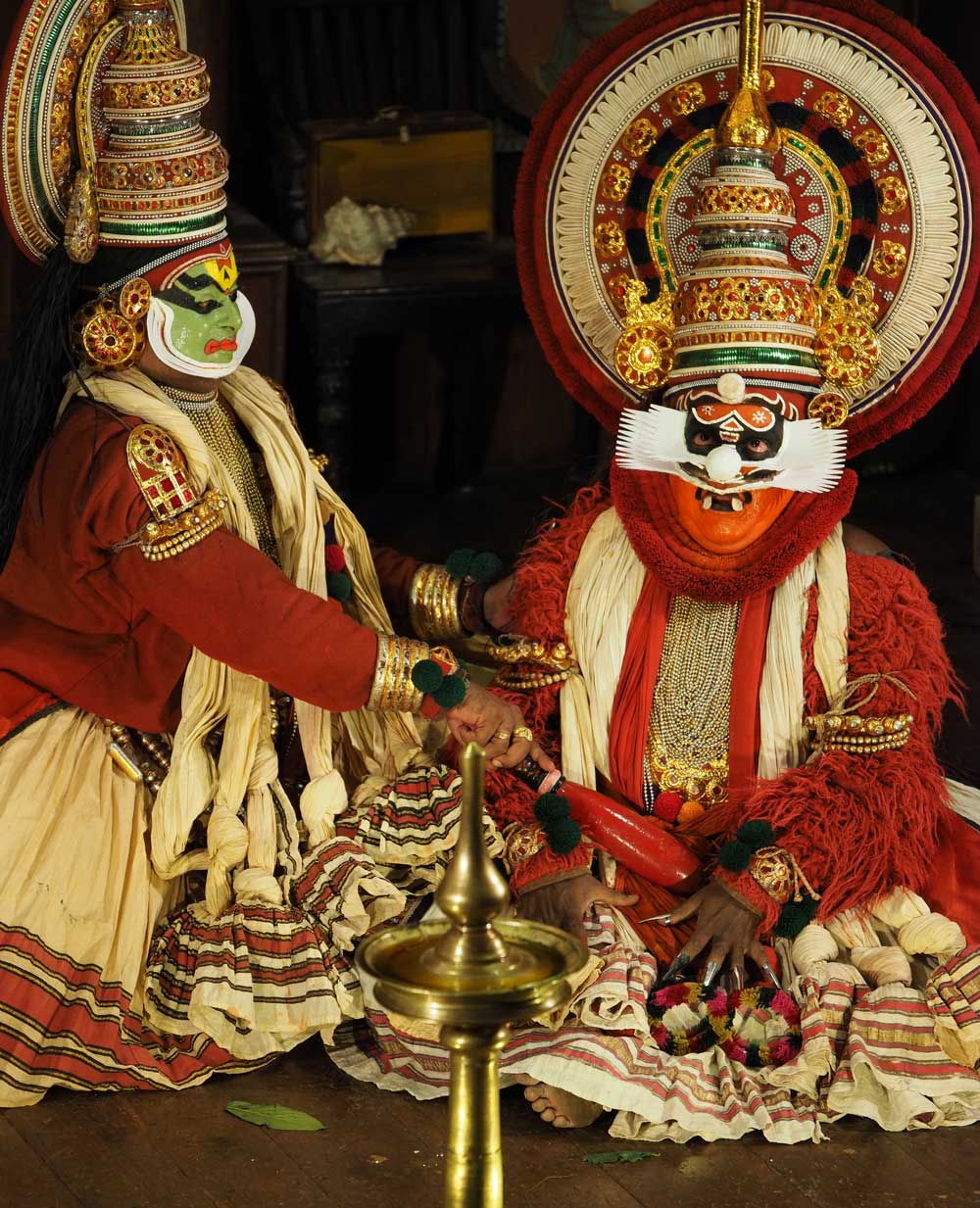
The demon meets his fate at the end of Bhima’s
club.
On to Kerala State: A Day on the Backwaters
Back to Beginning of South India Backpacking Dec. 2018-Jan. 2019